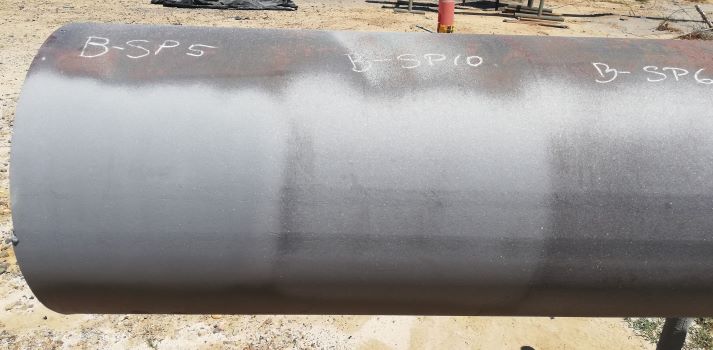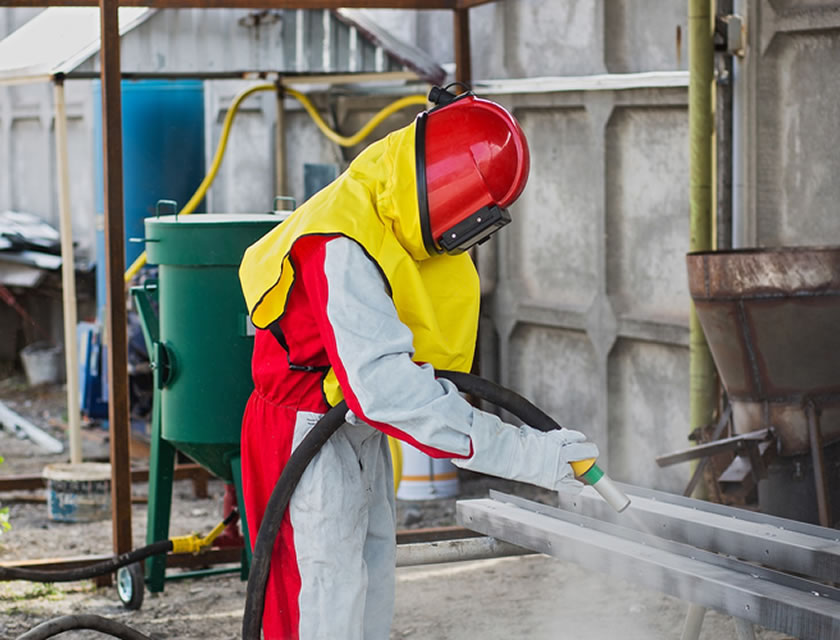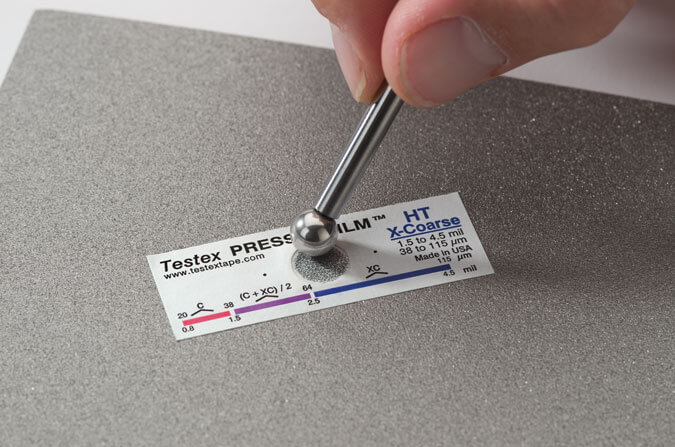Near-White Metal Blast Cleaning (SSPC-SP 10/NACE No. 2)
Near-White Metal Blasting SSPC-SP 10 (NACE No. 2) is a standard established by the Society for Protective Coatings (SSPC) and the international NACE standard. Near-White Metal Blasting should be used to clean unpainted or painted steel surfaces prior to applying a new protective coating or coating system. SSPC-SP 10 / NACE No. 2 removes all dust, coating and mill scale. The allowable stain limit for near-white metal blasting is up to 5% of the area of each surface unit. The area of the unit being evaluated should always be approximately 5776 mm2 or 9 in2.
When is SSPC-SP 10 near-white metal blasting used?
Near white metal blasting is established because in atmospheres exposed to adverse conditions it is difficult to achieve the SSPC-SP 5 / NACE No. 1 white metal cleaning grade and remove all scratches and shading. In addition, commercial grade SSPC-SP 6 / NACE No. 3 blasting is not high enough to achieve the degree of cleanliness required by a coating system used under these conditions. SSPC-SP 10 / NACE No. 2 was created to reduce surface preparation costs and is designed for use in areas exposed to high humidity, chemical atmospheres, marine and other corrosive environments.

What is needed before starting SSPC-SP 10 / NACE No. 2 cleaning?
For near-white metal blasting SSPC-SP 10 (NACE No. 2), the surface must be free of visible contaminants, which must be removed in accordance with SSPC-SP 1 (Solvent Cleaning). Some coating specifications may require that a chloride test be performed to ensure that the amount of soluble salt deposited is less than the allowable limit. If after solvent cleaning, the soluble salt content is greater than the allowable limit, then the specification may require a high pressure water wash.
What environmental conditions should be monitored?
The temperature of the substrate should not be lower than the surrounding air, otherwise moisture can condense on the clean surface and cause instantaneous oxidation. The relative humidity must be less than 85%. The abrasive blasting process should not be performed if the surface temperature is less than 5°F (or 3°C) above the dew point.
In addition, all conditions mentioned in the coating specification for near-white metal blasting must be met. Coating specification documents are part of the contract and establish requirements that must be met for each project.
What methods can be used for SSPC-SP 10 near-white blasting?
This cleaning method can be performed by dry abrasive blasting in the following ways:
- Using compressed air, blast nozzles, and an abrasive
Using a closed-loop recirculation system with compressed air, blasting nozzle and an abrasive, with or without vacuum for the recovery of abrasives and dust.
Using a closed-cycle recirculation system with centrifugal wheels and an abrasive
Additional methods can be discussed between the contractor and those who established the requirements.

What abrasives should be used?
The abrasives selected for this method depend on a variety of factors. To select an appropriate abrasive, it is necessary to consider the type, grade, and surface condition of the steel. The size and type of abrasive should be selected according to the blasting system to be used, the initial condition of the surface, the finishing requirements, and whether or not the abrasive needs to be recycled.
The abrasive used for cleaning should be dry and free of any contaminants, such as oil, grease, etc. The air compressor should also be checked for oil and water contamination by blotting paper test.
What to do after cleaning SSPC-SP10?
Once the above methods have been applied, be sure to remove all visible residue from the surface. This can be accomplished by brushing, blowing the residue with clean, dry air, and vacuuming.
All dust (from the abrasive blasting process) should be removed from the substrate by air blasting (90 psi). Some specifications require a dust test to ensure that all dust is removed from the surface.
Most coating specifications require a measurement of the surface profile by a replica film test or testex tape test. The reference standard for this test is ASTM-4417, method C or ISO-8503-1. The roughness of the surface profile depends on the coating specification, most specifications require 2 to 3 mils.

After blasting, make sure that all surface standards presented in the specification of the working coating are met. Defective surfaces can lead to premature coating failure. In addition, before continuing to apply the coating, be sure to remove any visible rust that forms on the steel surface after blasting. If the cleaned surface is exposed to salt, moisture, contamination or a corrosive environment, oxidation can occur quickly.




